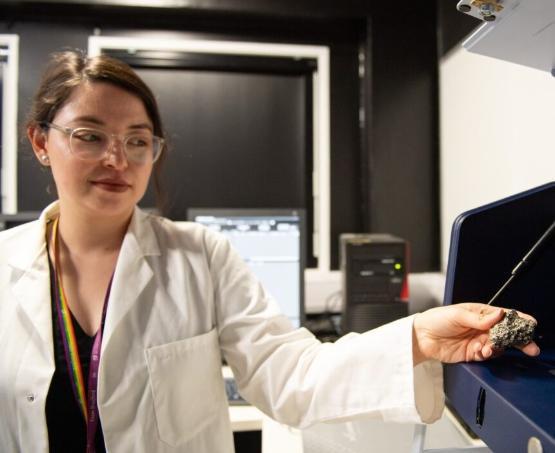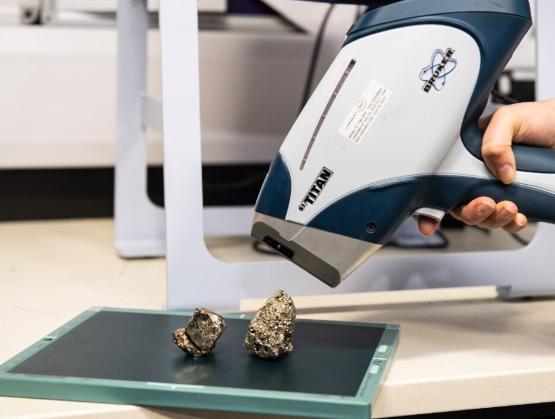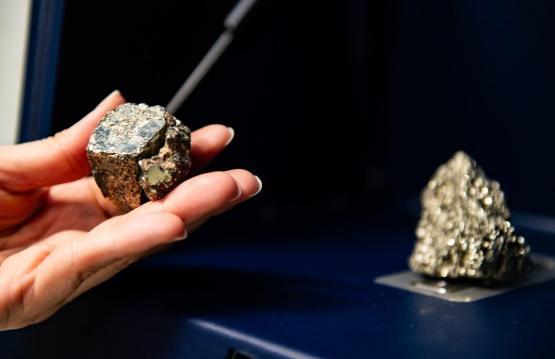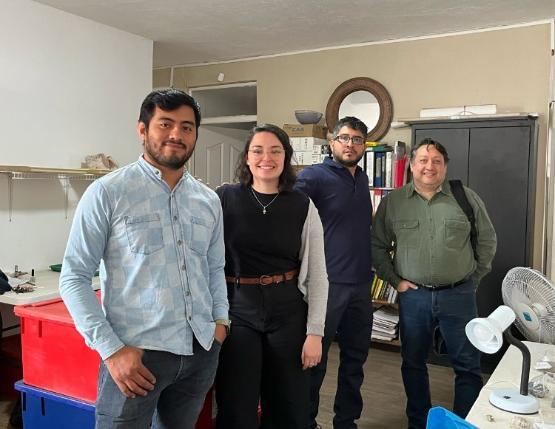Solving the mystery of the Mayan mirrors

Archaeological scientists from the University of Bradford are using trace elemental analysis to solve a centuries-old puzzle of where the ancient Mayan civilization mined material to make its famous fool’s gold mirrors.
The mirrors in question were typically owned by elites right across ancient Mesoamerica and were made using iron oxides and pyrite, a mineral otherwise known as fool’s gold because of its likeness to the precious metal.
Now PhD researcher Andrea Sandoval Molina from the University of Bradford is using trace elemental techniques to work out precisely the area where pyrite, used in mirrors, was mined. She co-authored an article recently published by the journal Ancient Mesoamerica.

The non-invasive technique involves scanning minerals using a portable X-Ray Fluorescence gun to extract a unique ‘chemical fingerprint’ - this can then be matched to a geological region, showing where the mineral was mined.
Andrea, originally from Guatemala, which sits at the heart of the ancient Mayan civilization, said she hopes the technique will shed light on ancient trade routes across ancient Mesoamerica.
She said: “One of the important factors of this technique is that it is non-invasive. In other words, we do not have to break the sample to analyse its chemical composition. Instead, we aim to use X-Ray Fluorescence to create a chemical fingerprint, which we can then match to a geological area.”

Ancient Mesoamerican iron ore mirrors exhibit highly specialised craftsmanship, and were culturally significant objects for Mesoamerican cultures such as the Olmec, Aztec and Maya. Some of them are made from a carved slate base with iron ore tiles adhered with a glue, in a mosaic-like arrangement. There are no previous studies that indicate how these materials and goods were traded within the Mayan area.
“This research aims to provenance the pyrite used to craft reflective artefacts from the Classic Mayan archaeological sites of La Corona and Cancuén, which were linked in a commercial route of precious goods.”
She added: “Once we understand this, it may give us a more accurate understanding of economic activities involved with raw material extraction, trade routes, and connections between sites and regions.”

Andrea’s PhD is funded by the Schlumberger Foundation, a non-profit organisation that supports science and technology education, recognising the links between science, technology, and socio-economic development.
This project is a collaboration between the University of Bradford, Universidad del Valle de Guatemala, and The National Geology School in Guatemala, together with two Guatemalan archaeological projects, La Corona and Cancuén.

Fellow researchers, pictured above, include David Macz, Andrea Sandoval, Gabriel Morales, Dr. Tomás Barrientos.
